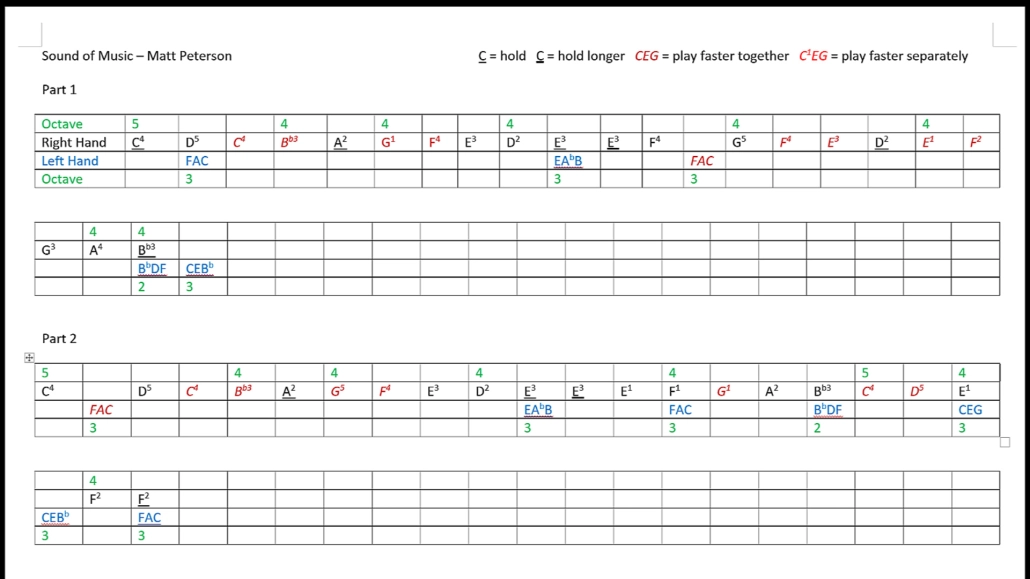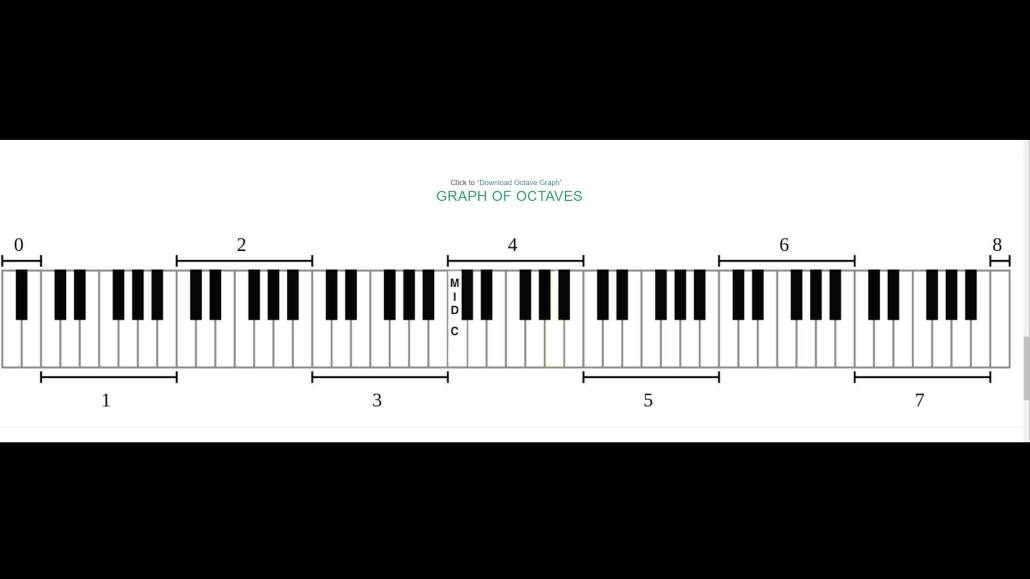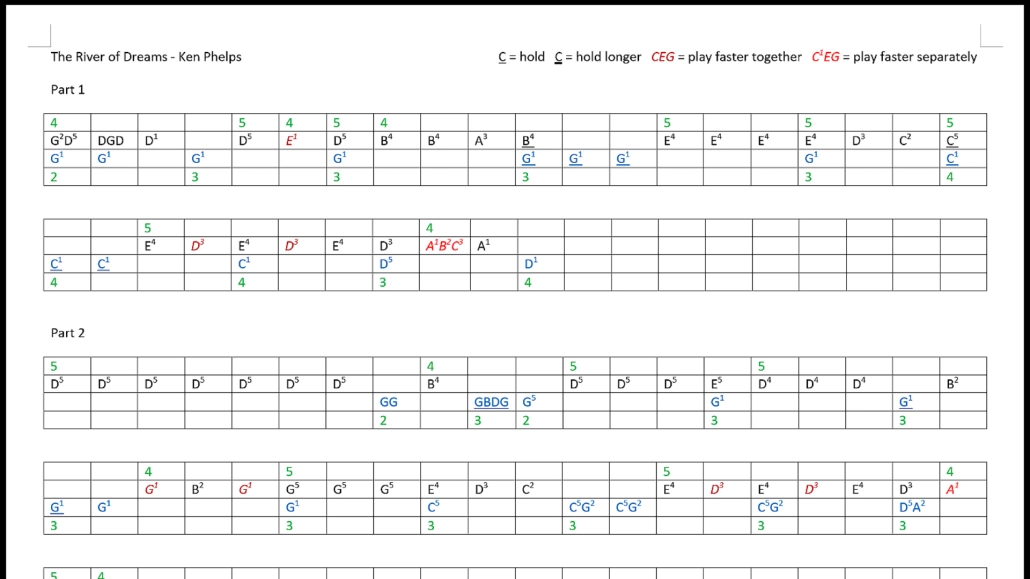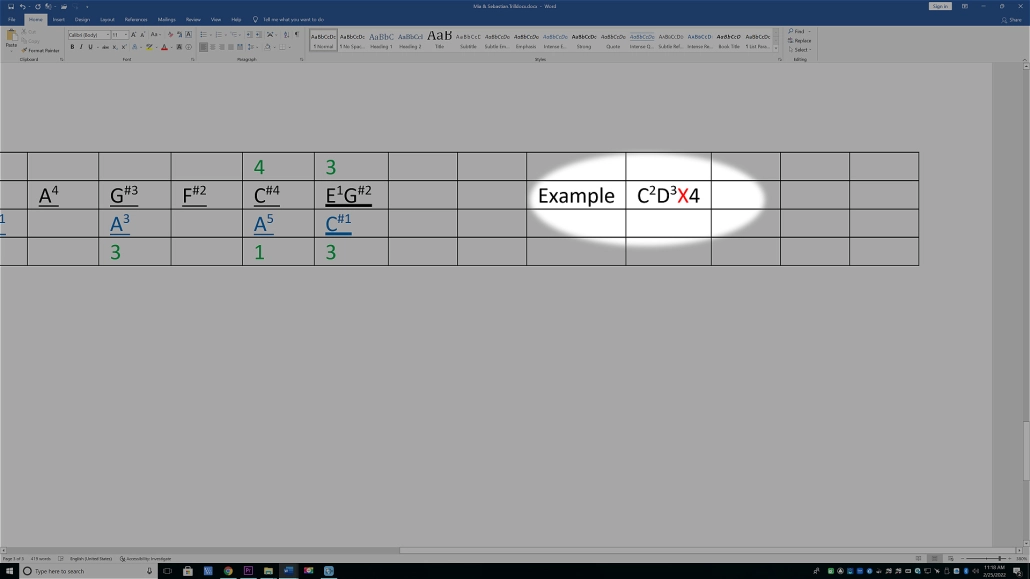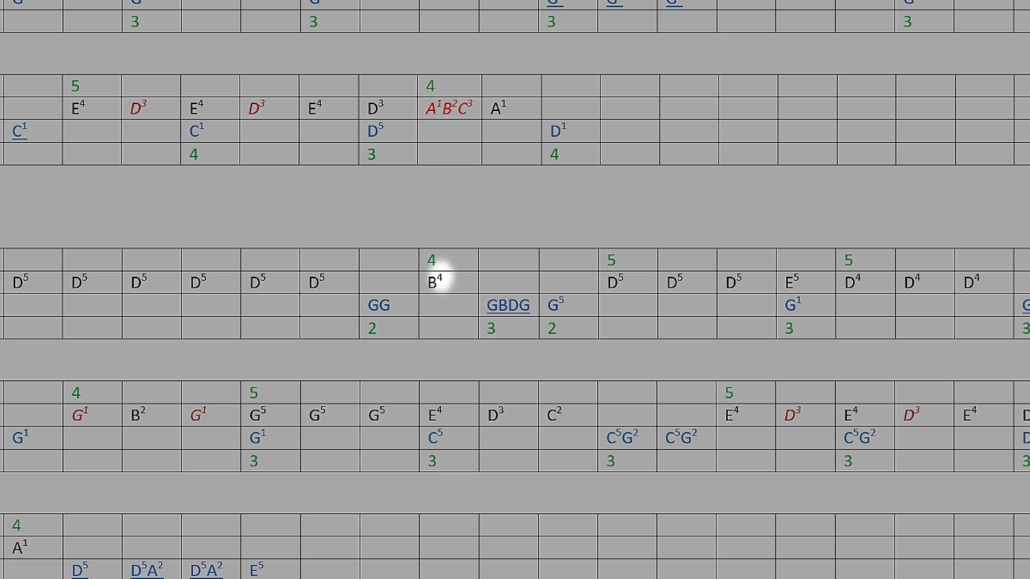The Word Notation is the notes written out in letter form copied onto a Microsoft Word Graph which was developed exclusively for this instructional series. Let’s look at this Notation and look at the song Sound of Music. The Word Graph is made up of 4 rows and 20 columns and follows the section of songs as played in the parts. The beginning and ending of each of the parts on the video overlap approximately 1 second but the notation does not. This notation will probably be unfamiliar because it was developed exclusively for this instructional series. The right hand is on the second row in black type and the left hand on the third row in blue type. What octave the note is played is written on the top row for the right hand and bottom row for the left both in green type. These fist column row descriptions labeled octave, right hand, left hand and octave are shown here for training purposes and are not included on the rest of the Word Notation documents. At the top of the page are the symbols for the rhythm where an underlined letter means the note is held longer, such as the E in column 11, and when the line is thicker it is held for an extra beat, such as the E in column 12. On all the Word Notation documents I use the letter C above the line in the symbols for the rhythm only as an example, but it could be any letter in the scale. When a letter is shown in red it means the note is played faster. When there are two or more letters together and they are dark red and italicized, it means they are played together such as in column 14.
The octaves are from a C to a C and on an 88-keyboard piano there are 7 C to C octaves with an extra two notes A & B at the very low end. The lowest C to C is octave 1, the highest C to C is octave 7. Middle C, which we specifically mark on the keyboard, is octave 4. To make this notation less cluttered we don’t mark the octave of every note but only the ones needed to guide you thru the piece. The octave is marked by whatever the most left finger is playing. To understand how the most left finger identifies the octave I suggest watching the video in slow motion and pausing it while looking at the Word Notation and following both together. With a little practice this notation should become second nature. Click on: Link to Octave Graph
When there are two or more letters together and they are light red and italicized, they are played separately. Notes played separately will always have at least the first letter marked with the fingering as shown in the Word Notation River of Dreams. These letters are Italicized to distinguish them from grouped letters not played faster in case your printer is not printing in color. I show the letters CEG in both dark red and light red but these letters are only examples and not the actual notes and could be any letters in the scale. On all the Word Notation documents I use the letters CEG to indicate two or more notes in the symbols for the rhythm only as an example but they could be any letters in the scale.
If a player strikes 2 notes repeatedly this is called a trill and the two notes are written followed by a times sign and a number indicating how many times the notes are trilled.
The small number just to the upper right of the letter is the fingering transcribed as the player played it, but feel free to change it if it does not feel right. The fingering is indicated except where obvious, such as when a player plays an octave or chord as in column 8 & 10 in Part 2 of River of Dreams. In order to view the Word Notation on your computer, tablet, or phone you must have Microsoft Word downloaded or an equivalent.

